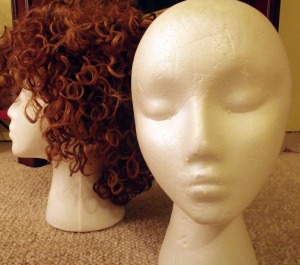Small sobs slightly echoed throughout the spacious bathroom. Fifty-seven-year-old Peggy Khera stood in the large mirror staring at herself through the tears that flowed from her confused eyes. She could not believe what she seeing.
She first noticed something was wrong when she watched more hair than usual follow the shampoo soapsuds into the recesses of the shower drain. Then to her surprise, she saw even more hair fill her paddle brush or fall to the white-tiled floor of her bathroom. Something was wrong.
Khera looked closely in the mirror and saw that her scalp seemed to be the only place in the bathroom that was not filled with her hair. She was going bald.
“I looked in the mirror and I was wondering why I saw these big gaps,” Khera said. “I saw scalp. I knew I was thinning but I was devastated.”
She immediately visited her dermatologist and learned that her alopecia, the technical term for baldness, was caused by a combination of stress and chemicals from perms and hair dye. Khera had no choice- the only way to grow her hair back was to get rid of the chemicals in her hair and “go natural.”
Although Khera was forced into “going natural” because of alopecia, she reflects the growing segment of women, especially African-American women, that are choosing to abandon westernized views of what hair should be-soft, flowing, long and straight- by ridding their hair of chemicals and styling it naturally.
The two methods of “going natural,” “the big chop” and transitioning, are making their mark in magazines, beauty websites, youtube.com and other media and have slowly penetrated modern day hair culture. Even celebrities such as Solange Knowles and others have “gone natural.”
Women are feeling a need to do this because the chemicals that straighten and perm their hair are the same ones that can destroy their hair and lead to breakage, balding and other issues, said Nikko S. Jackson Barrett, hair-care specialist.
“This newer generation is different,” Barrett said. “You guys are not afraid to try new things and be yourselves, I think that is why more women have been ‘going natural’ now.”
The first method of “going natural” is called “the big chop” and is the more drastic choice because it involves cutting off all the chemically treated hair and leaving only the natural hair. Sometimes the amount left is less than an inch, according to an article on essence.com
Brittany Bell, a senior at Towson University, went through “the big chop” and said she is proud of her decision. She decided to cut off her chemically treated hair after being encouraged by testimonies of women who went through the process on Youtube.com.
A few months later, she is still happy with her decision because she said it is more convenient and she feels like she is herself.
“I think I see my true identity now.” Bell said. “I’m not afraid to be who I am.”
On the other hand, transitioning is a gradual process in which women keep their relaxed, permed or dyed hair while growing out their hair. If they choose this method, they have to learn to style both their natural and chemically treated hair, Barrett said.
Many women choose to transition because it is less drastic than “the big chop”, allows them to get used to their hair in its natural state and offers different style options than shorter hair allows, Barrett said.
“There are many ways to transition without going completely drastic and cutting all your hair off,” Barrett said. “You can use weaves, cornrows, braids and even continue to just blow dry and softly maintain it.”
Khera used transitioning to grow out her hair in the form of braiding because she liked that she could keep her length and still have hair to style.
Whichever method women decide to use to “go natural,” they are finding many benefits of making their decision including money saved on hair products, the convenience of shorter hairstyles and learning to embrace who they are, according to an article on clutchmagonline.com.
Also, the scalp and its pores are protected allowing unhindered hair growth and hair is healthiest in its natural state when properly managed, Barrett said.
However, there are some detriments to going natural including the lack of style options associated with shorter hair and going against the grain of society, Barrett said.
As a result of society still embracing the western attitudes and social rules of how hair should be styled, a lot of women refuse to go natural.
“I think that all women should wear their hair straight,” said Lucy Allen, mother of Khera. “Especially Black women because their natural hair is too unruly and does not look professional or pretty.”
But like many social rules, there are always those who are willing to break them if need be.
“I want to keep my hair because if I have to choose between straightening and dying my hair and go bald or be nappy and actually have hair, I would choose to go nappy,” Khera said as she stared in the mirror with a smile on her face at her new growth in the areas where she used to be bald.

Leave a comment